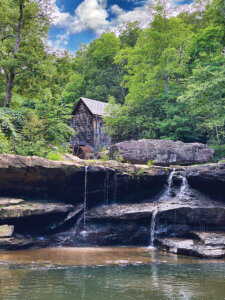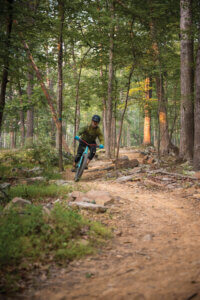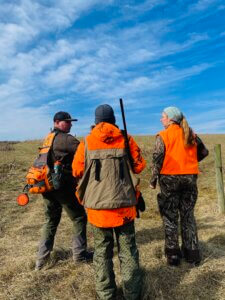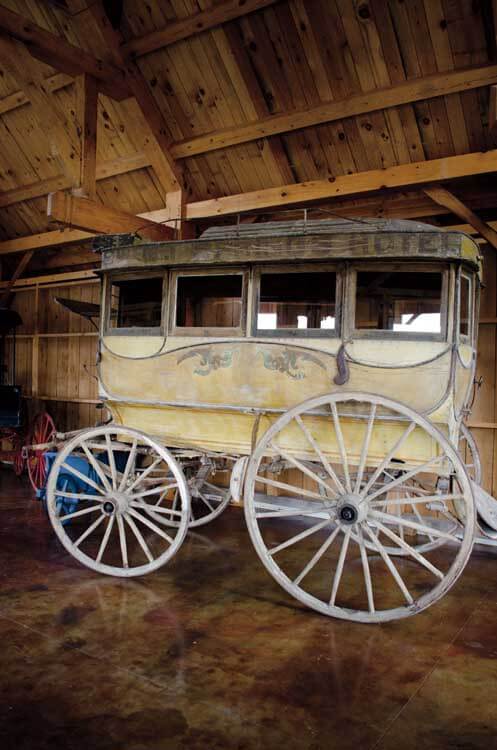
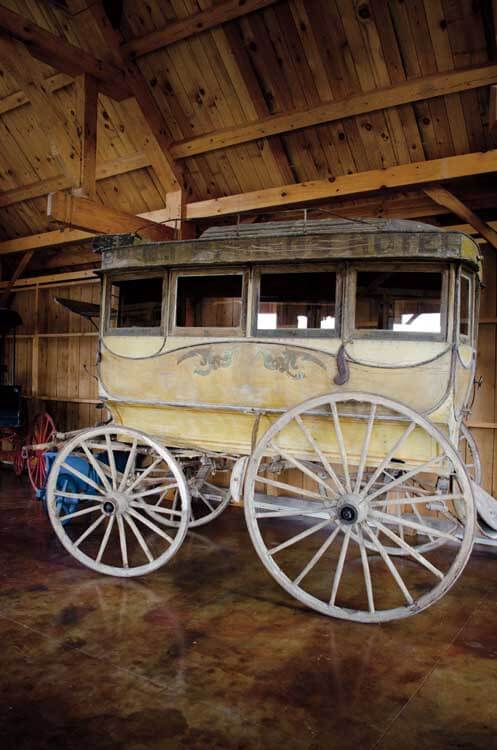
The Carriage House Museum in Union offers a glimpse of the town’s stylish past.
Before the American Civil War, Monroe County was a playground for genteel southerners. Favored with bountiful farmland as well as wool mills, gristmills, and sawmills, Monroe was also blessed with mineral springs that quickly became major resorts. Roads crisscrossed the county leading from farm to town to resort, carrying passengers in all manner of stylish vehicles, from plush omnibuses and buggies to jaunty winter sleighs hosting ladies in furs and men in hats. Monroe was the country oasis for high society. Though few of those resorts still stand, hints of society life are still around, thanks to the Monroe County Historical Society, of which I became president in 2012.

MCHS has owned a collection of these old carriages for most of its 50-year history, but for much of that time they sat collecting dust in storage. There was no place to show them off—that is, until 2013 when the historical society finally decided to build a proper museum. Constructed on land made available by the Union Town Council, the museum itself is an exhibit of traditional timber frame construction rendered in the Gothic Revival style. The building encompasses about 1,000 square feet, enough for our carriages plus a few more we received as gifts from locals. Local timber framer Chip Sills built the building, teaching numerous volunteers the principles of timber frame construction, which involves mortise and tenon joints pegged with dowels and exposed timbers featuring soaring hammerbeam trusses. Cross-sectional decorative elements called “bents” were assembled on the ground and then, with great excitement, raised and joined together with the help of a crane.
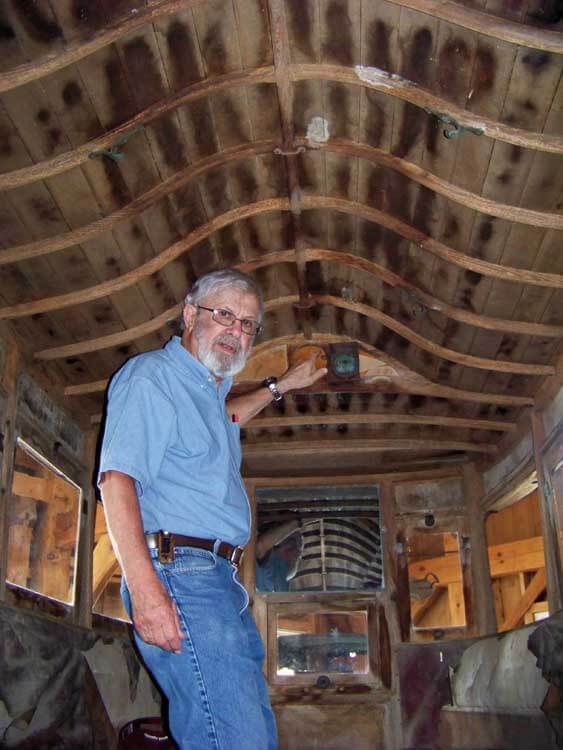
Omnibus
The pride of our fleet is an 1880s-vintage omnibus that once carried visitors to the Chalybeate Springs and Sweet Springs resorts in Monroe. The bus is a little tired looking but is apparently the only one of its kind that survives in original condition, complete with painted scrolls of country scenes inside and out.
The omnibus is front and center in our new building. It was manufactured by the John Stephenson Company in New York and stands over nine feet tall. As such, it is the size of a stagecoach but was more lightly built and intended for short hauls. Decades ago, the bus collected visitors from the Allegheny Railway station and delivered them to the springs resorts about ten miles away
In the 19th century, the springs of Monroe County attracted a fashionable crowd, and these folks required a stylish manner in which to arrive. Omnibuses came supplied with all of the then-modern conveniences, from mirrors and lamps to bells for alerting the drivers to pass through windows for paying fares upon arrival.
Single-riders
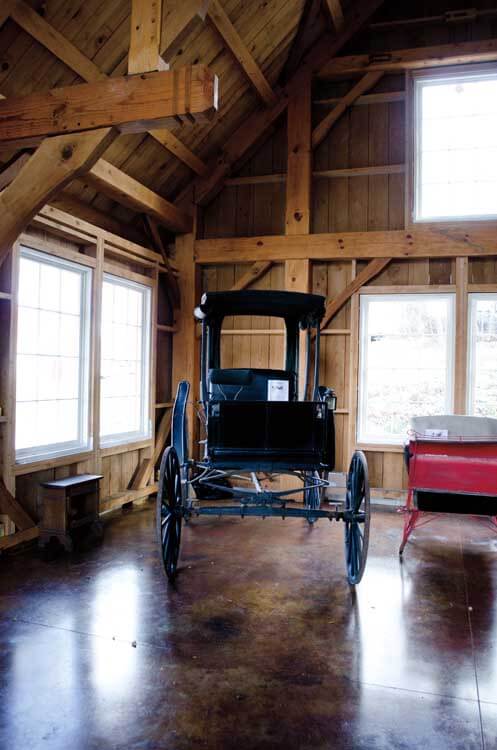
Other vehicles in our collection come from the old Walnut Grove estate, former U.S. Congressman Andrew Beirne’s home north of Union. These include an elegant Summer Rockaway, a utilitarian Mountain Wagon, and a stylish Portland Cutter sleigh. The three Walnut Grove vehicles, donated by the late Nancy M. White, represent the gentleman plantation owner’s diverse requirements.
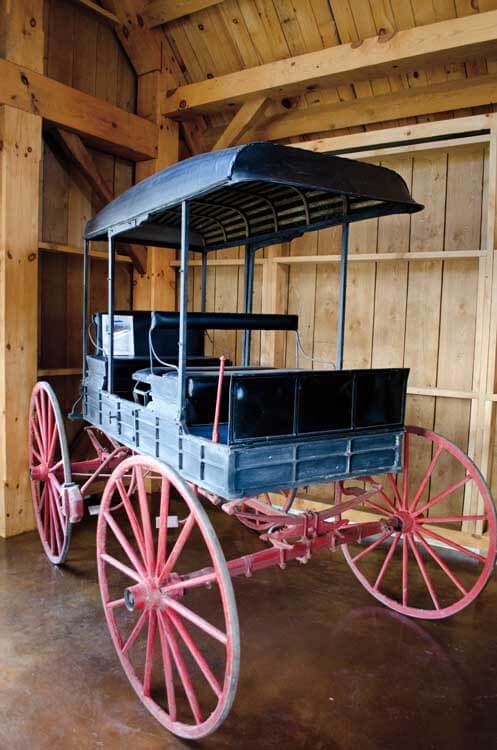
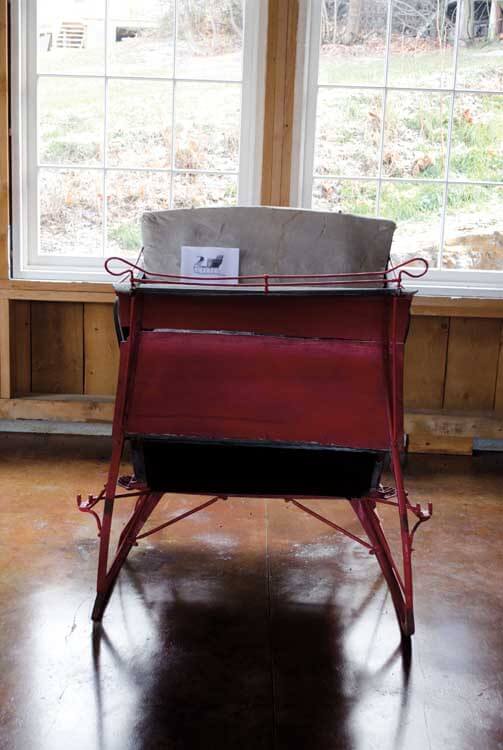
The Summer Rockaway was originally shipped into the area from Baltimore and would have been used to take the plantation family to church or to dinner at a nearby resort. It boasts a roof that extends forward over the driver’s seat and leather side curtains for heavy weather use. The Mountain Wagon was a more practical vehicle for the time, reminiscent of the modern station wagon. It also has a full roof and was a people carrier, but it could be adapted for hauling freight with the addition of a tailgate and removable seats. Finally, the Portland Cutter sleigh was for the young gentleman of the family who would impress his lady friend with a ride in the country on a winter day. It was strictly for fun as it could accommodate only two people and had no luggage space.
Doctor’s Buggy
One of the first vehicles donated to the museum, outside of our original collection, was a doctor’s buggy, which, judging by our vintage picture collection, was the most common of all vehicles on the early roads. This one-seat carriage was given by local couple Anna Meadows and David Dillon. The picture collection shows diverse uses for this vehicle, from churchgoing to romantic courting to everyday business and family use.
Farm Wagon, Surrey, and Smaller Items
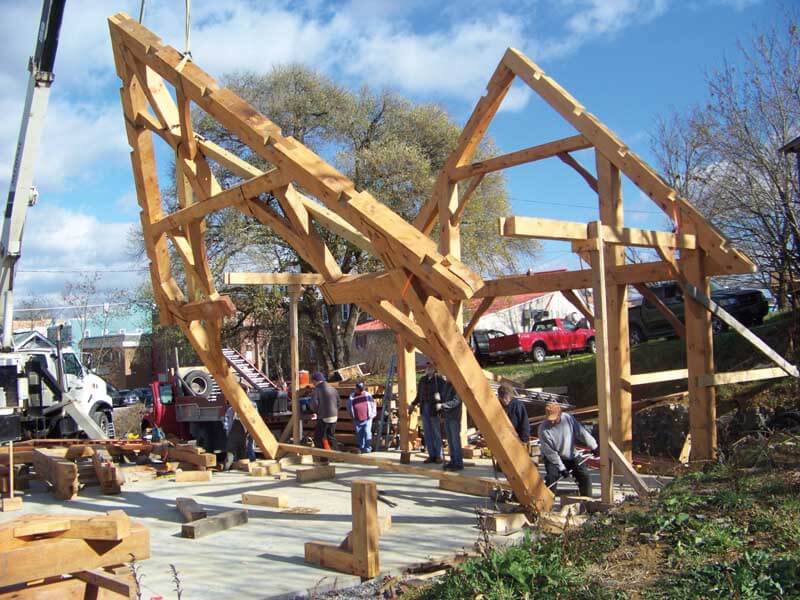
Donated by local farm equipment dealer Avery Atkins, our collection’s farm wagon was used by farmers and for the general carrying of products like wool and wheat. The surrey, donated by Jean Miller of Charleston, is a passenger transport vehicle that could be adapted to carry goods by the removal of the back seat. Our example does not have a top, but it does have the supports for one. Smaller vehicles such as a goat cart, a firewood sled, and two wheelbarrows help to expand the collection.
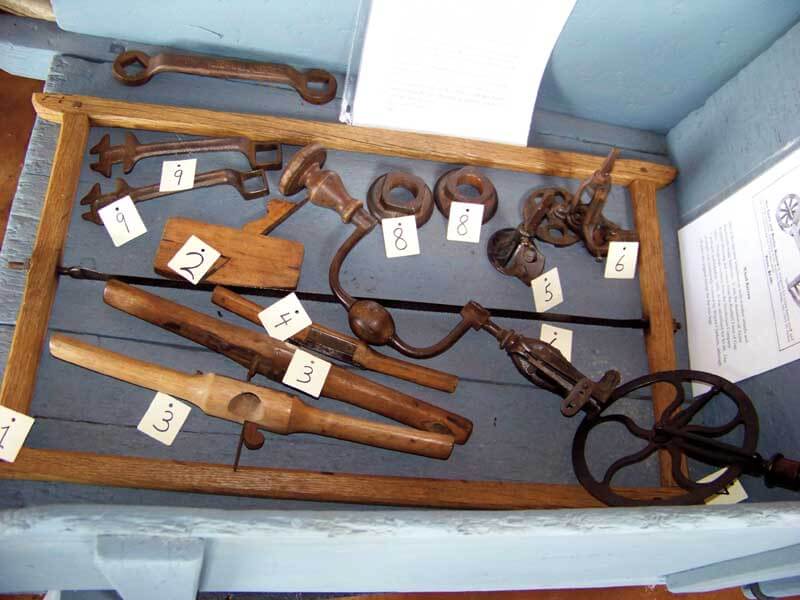
Other items in the Carriage House Museum include carriage machinery and tools, horse tack, and numerous period drawings and pictures, a carriage jack, a harness maker’s clamp, and a tire shrinker—necessary back in the day to fix tires, then metal rims, that would come loose after continual pounding along the gravel roads.
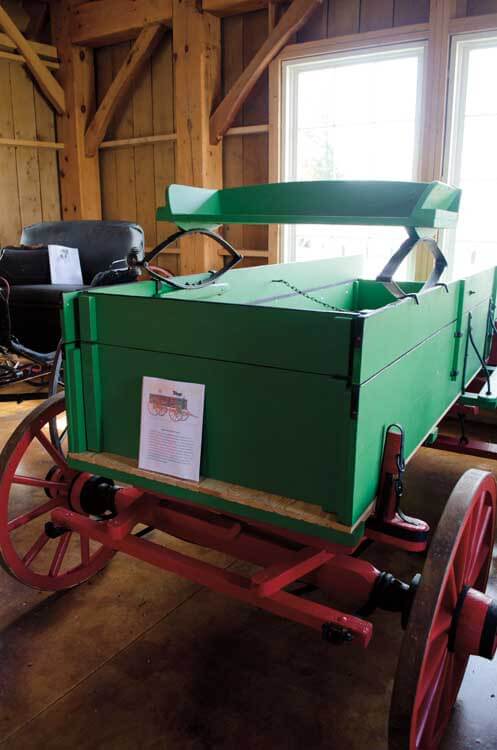
The Carriage House Museum is part of the historical society’s larger campus on Main Street in Union that includes a general museum and a pair of log houses that are beautifully furnished in period antiques, all derived from Monroe County.
The museum is open from June through September and visitors are welcomed between 10 a.m. and 4 p.m. A volunteer is stationed in the main museum and will open the carriage house and log houses on request.
Ride Along
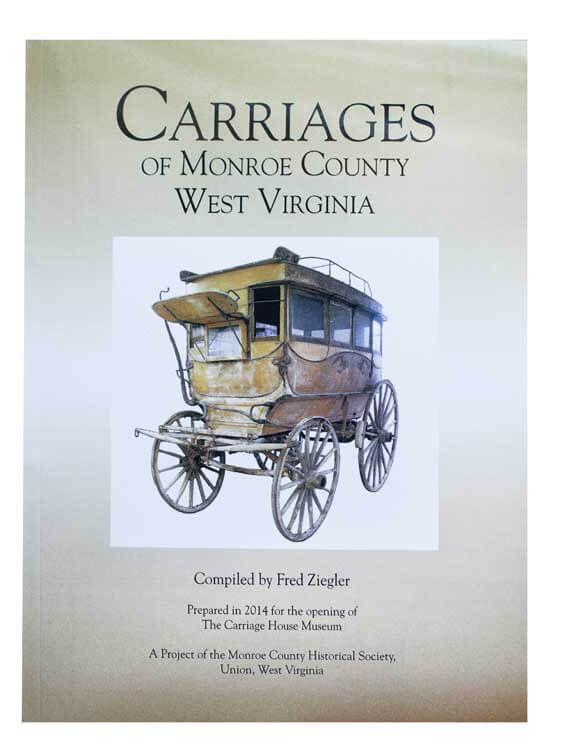
The Monroe County Historical Society stimulated public interest in the carriage house project with a series of articles in our hometown newspaper Monroe Watchman, including vintage pictures showing buggies, carriages, and wagons in use around Monroe County. MCHS scoured museum collections for pictures, and readership was invited to submit items from family scrapbooks that showed everyday life in our rural community. These were published with articles about the carriages’ drivers and owners, the early road systems they traversed, the resort spas they serviced, and the trade and industry they supported. These materials were later assembled into a book called Carriages of Monroe, West Virginia, which serves as a guide to the museum as well as to a larger view of life 100 years ago. monroewvhistory.org
written by Fred Ziegler
photographed by Nikki Bowman Mills



